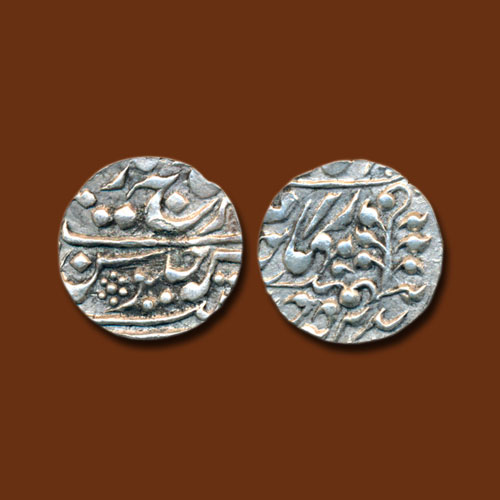Princely State Kishangarh
2019-06-04 Tue
Kishangarh was the Princely State of India during British rule in India. This state is named after its founder Jodhpur prince Kishan Singh who founded this state in the year 1609. Prior to Kishan Singh, this state was also ruled by Maharaja Samokhan Singh, a distant relative of Kishan Singh’s family and grandfather of Naubat Khan. This Princely State came under British dominance by the treaty which was concluded in the year 1818 and later it became the part of state Rajasthan in the year 1948 CE.State Kishangarh is a trade center for cotton fabrics and agricultural produce, this state also connected to Ajmer and Jaipur with roads and railways. Apart from cotton fabrics and agricultural products this state also produces Soap, woolen carpets and shawls. Hand-loom weaving, cloth dyeing, and precious-stone cutting are local cottage industries. Marble quarrying and cutting are also important to the local economy.
This silver quarter rupee was issued from Princely State Kishangarh, it was issued by the king Yajna Narayana. The obverse of this coin is inscribed with the name of King George V with Jhar Symbol. The reverse of this coin is inscribed with a mint name.
Image Courtesy: Todywalla Auction
Latest News
-
Malwa Sultan Mahmud Shah Silver Coins
2025-09-11 ThuMalwa Sultan Mahmud Shah minted silver coins in round and square flans. <br><br> For round coins,...
-
Malwa Sultan Mahmud Shah Billon coin
2025-08-26 TueMalwa Sultan Mahmud Shah's billon coins followed three weight standards: 100 rati, 96 rati, and 80 r...
-
Fascinating Archaeological Facts on Postage Stamps - 91
2025-08-23 SatRhinoceros is one of the oldest land mammal species existing in India. There are five species of rhi...
-
Fascinating Archaeological Facts on Postage Stamps - 90
2025-08-23 SatUthiramerur, a Village in Kanchipuram, Tamil Nadu, is notable for its Temple inscriptions that descr...
-
Fascinating Archaeological Facts on Postage Stamps - 89
2025-08-21 ThuThe term “millet” is derived from the Latin word “milum,” which translates to grain. millets...

